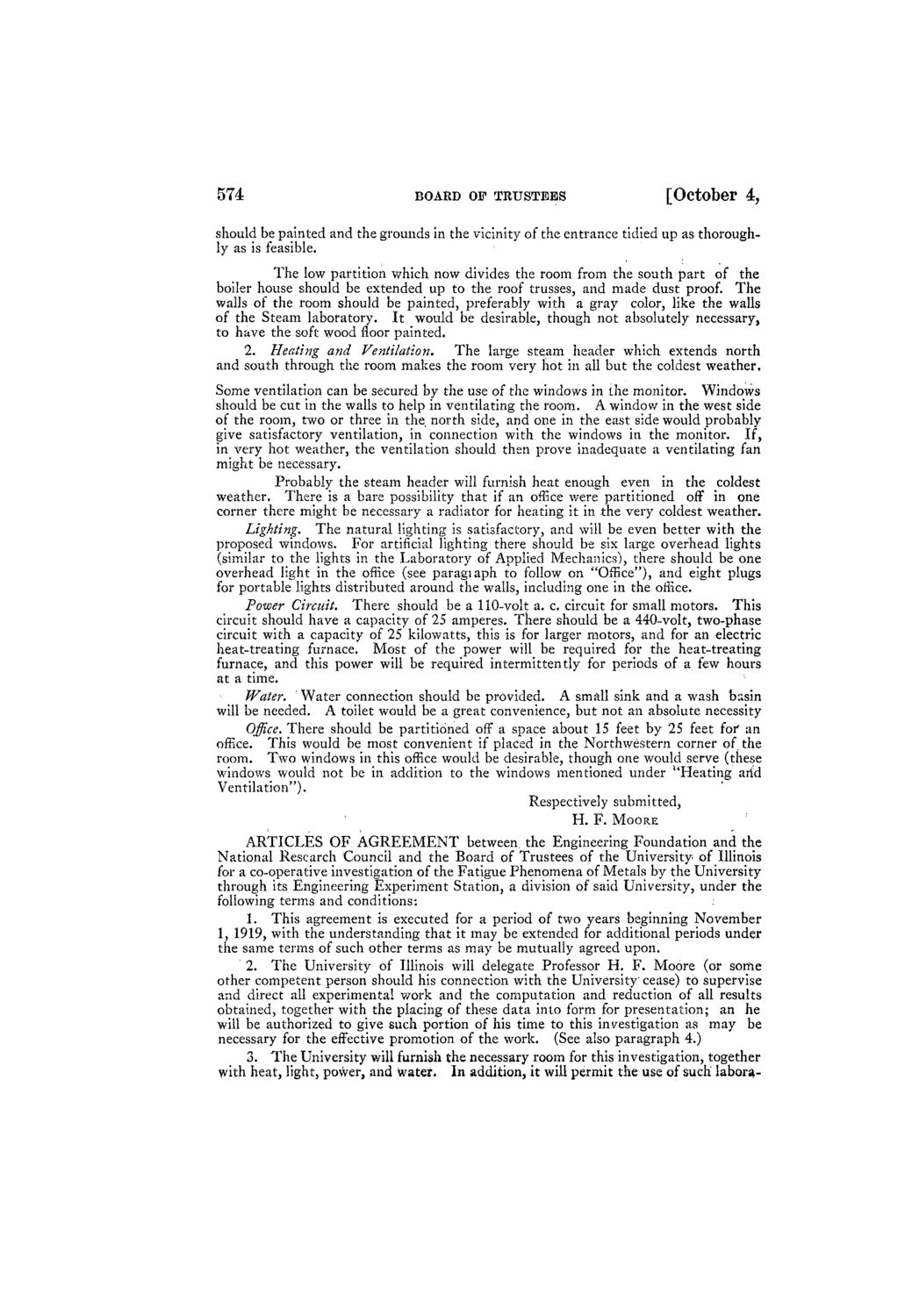| |
| |
Caption: Board of Trustees Minutes - 1920
This is a reduced-resolution page image for fast online browsing.

EXTRACTED TEXT FROM PAGE:
574 BOARD OF TRUSTEES [October 4, should be painted and the grounds in the vicinity of the entrance tidied up as thoroughly as is feasible. The low partition which now divides the room from the south part of the boiler house should be extended up to the roof trusses, and made dust proof. The walls of the room should be painted, preferably with a gray color, like the walls of the Steam laboratory. It would be desirable, though not absolutely necessary, to have the soft wood floor painted. 2. Heating and Ventilation. The large steam header which extends north and south through the room makes the room very hot in all but the coldest weather. Some ventilation can be secured by the use of the windows in the monitor. Windows should be cut in the walls to help in ventilating the room. A window in the west side of the room, two or three in the north side, and one in the east side would probably give satisfactory ventilation, in connection with the windows in the monitor. If, in very hot weather, the ventilation should then prove inadequate a ventilating fan might be necessary. Probably the steam header will furnish heat enough even in the coldest weather. There is a bare possibility that if an office were partitioned off in one corner there might be necessary a radiator for heating it in the very coldest weather. Lighting. The natural lighting is satisfactory, and will be even better with the proposed windows. For artificial lighting there should be six large overhead lights (similar to the lights in the Laboratory of Applied Mechanics), there should be one overhead light in the office (see paragiaph to follow on "Office"), and eight plugs for portable lights distributed around the walls, including one in the office. Power Circuit. There should be a 110-volt a. c. circuit for small motors. This circuit should have a capacity of 25 amperes. There should be a 440-volt, two-phase circuit with a capacity of 25 kilowatts, this is for larger motors, and for an electric heat-treating furnace. Most of the power will be required for the heat-treating furnace, and this power will be required intermittently for periods of a few hours at a time. Water. '' Water connection should be provided. A small sink and a wash basin will be needed. A toilet would be a great convenience, but not an absolute necessity Office. There should be partitioned off a space about 15 feet by 25 feet for an office. This would be most convenient if placed in the Northwestern corner of the room. Two windows in this office would be desirable, though one would serve (these windows would not be in addition to the windows mentioned under "Heating arid Ventilation"). Respectively submitted, H. F. MOORE ARTICLES OF AGREEMENT between, the Engineering Foundation and the National Research Council and the Board of Trustees of the University of Illinois for a co-operative investigation of the Fatigue Phenomena of Metals by the University through its Engineering Experiment Station, a division of said University, under the following terms and conditions: 1. This agreement is executed for a period of two years beginning November 1, 1919, with the understanding that it may be extended for additional periods under the same terms of such other terms as may be mutually agreed upon. 2. The University of Illinois will delegate Professor H. F. Moore (or some other competent person should his connection with the University' cease) to supervise and direct all experimental work and the computation and reduction of all results obtained, together with the placing of these data into form for presentation; an he will be authorized to give such portion of his time to this investigation as may be necessary for the effective promotion of the work. (See also paragraph 4.) 3. The University will furnish the necessary room for this investigation, together with heat, light, power, and waters In addition, it will permit the use of such" labora-
| |